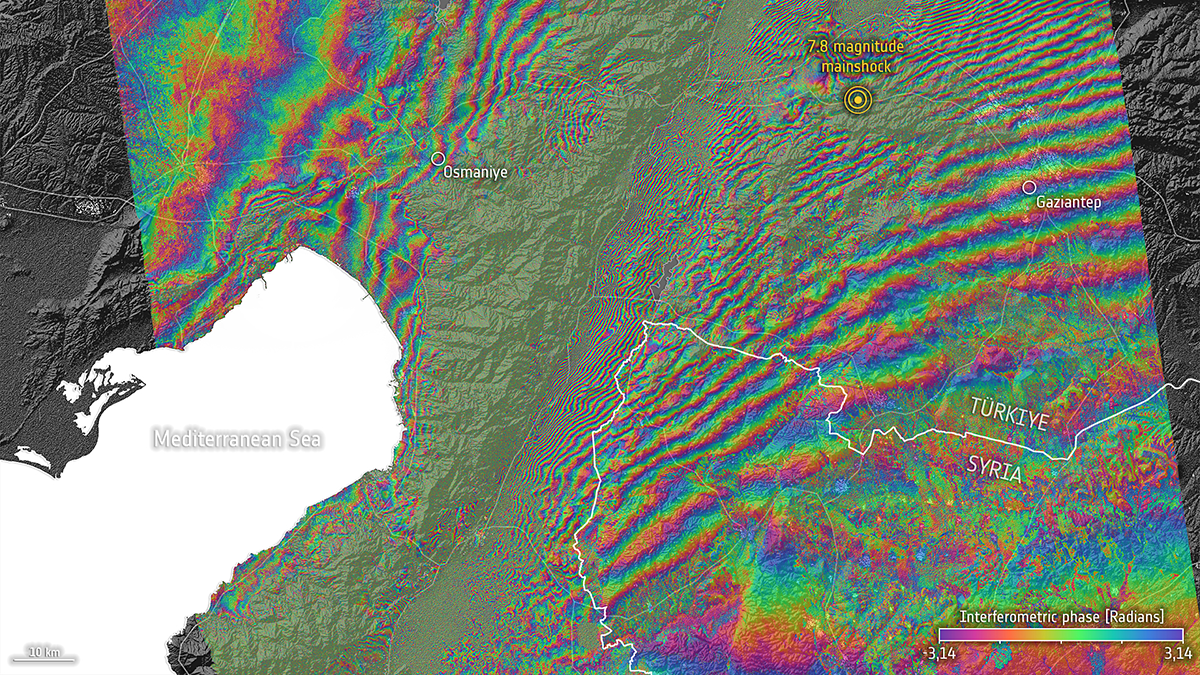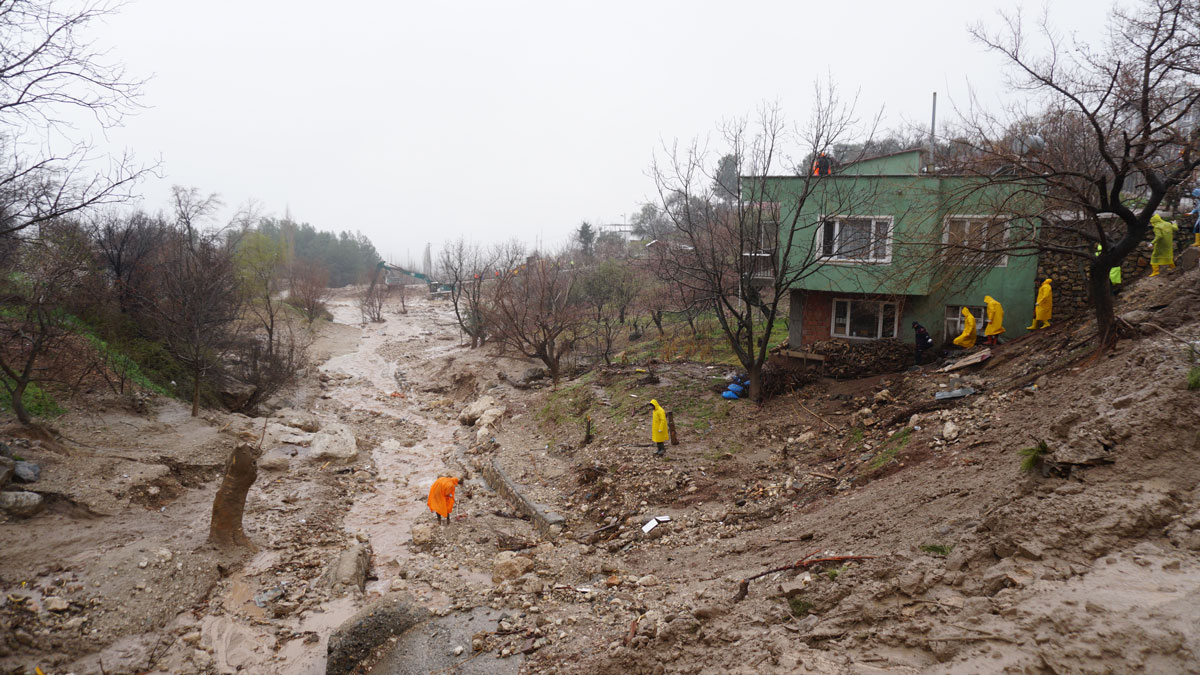Newly discovered aseismic events triggered by the 2023 Kahramanmaraş earthquake may represent a mode of fault slip between earthquakes and slow-slip events that researchers have long been seeking.
Syria
An Atmospheric River Exacerbated Türkiye’s 2023 Earthquake Crisis
A new study reveals how an atmospheric river led to more devastation after two earthquakes hit Türkiye and Syria, highlighting the need for better risk assessment models.
The 2023 Türkiye-Syria Earthquakes Shifted Stress in the Crust
In February, a devastating magnitude 7.8 earthquake struck the eastern Mediterranean, triggering a second major jolt and a cascade of aftershocks.
Armagedón a 10,000 A.C.
Fragmentos de un cometa probablemente golpearon la Tierra hace 12,800 años, y una pequeña aldea del Paleolítico en Siria podría haber sufrido el impacto.
Armageddon at 10,000 BCE
Fragments of a comet likely hit Earth 12,800 years ago, and a little Paleolithic village in Syria might have suffered the impact.
No Place to Flee
The Syrian refugee crisis has had far-reaching consequences for geologic risk in neighboring Lebanon, providing insights into the interplay between forced displacement and natural disasters.
Ancient River Discovery Confirms Mediterranean Nearly Dried Up in the Miocene
Sedimentary deposits reveal a Nile-sized river system flowing from what are today Turkey and Syria.







